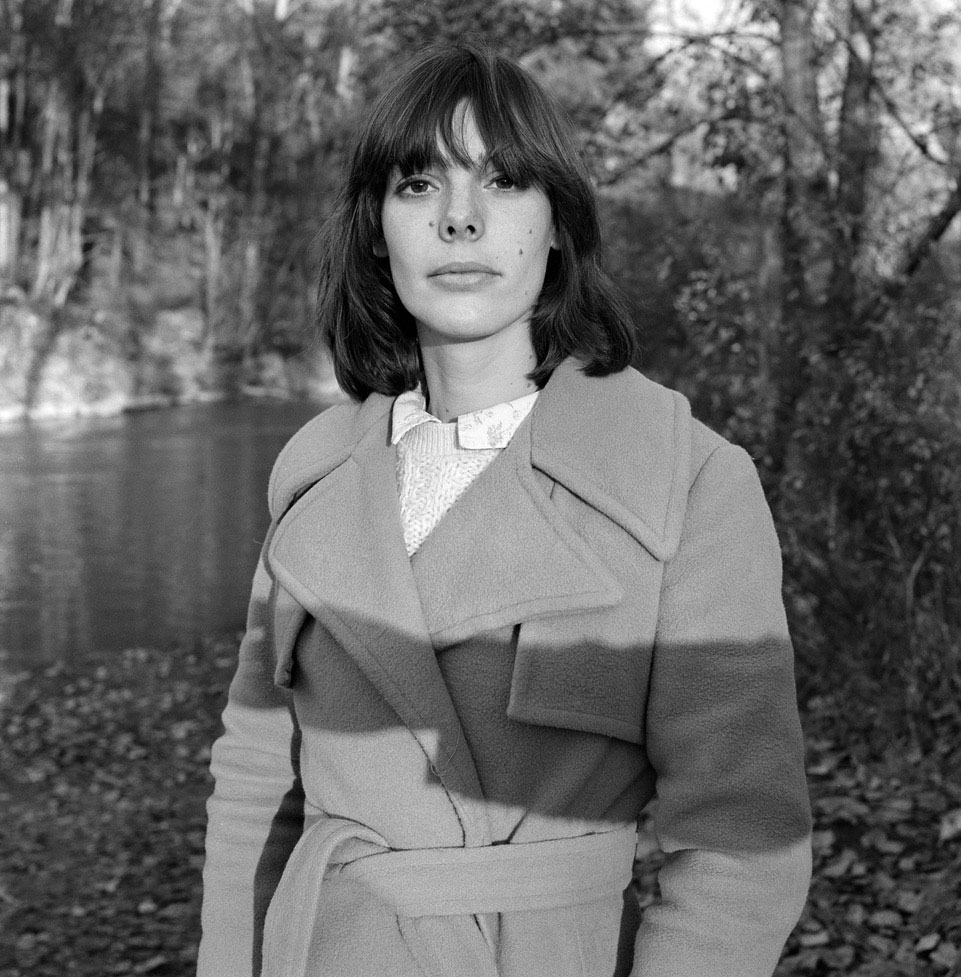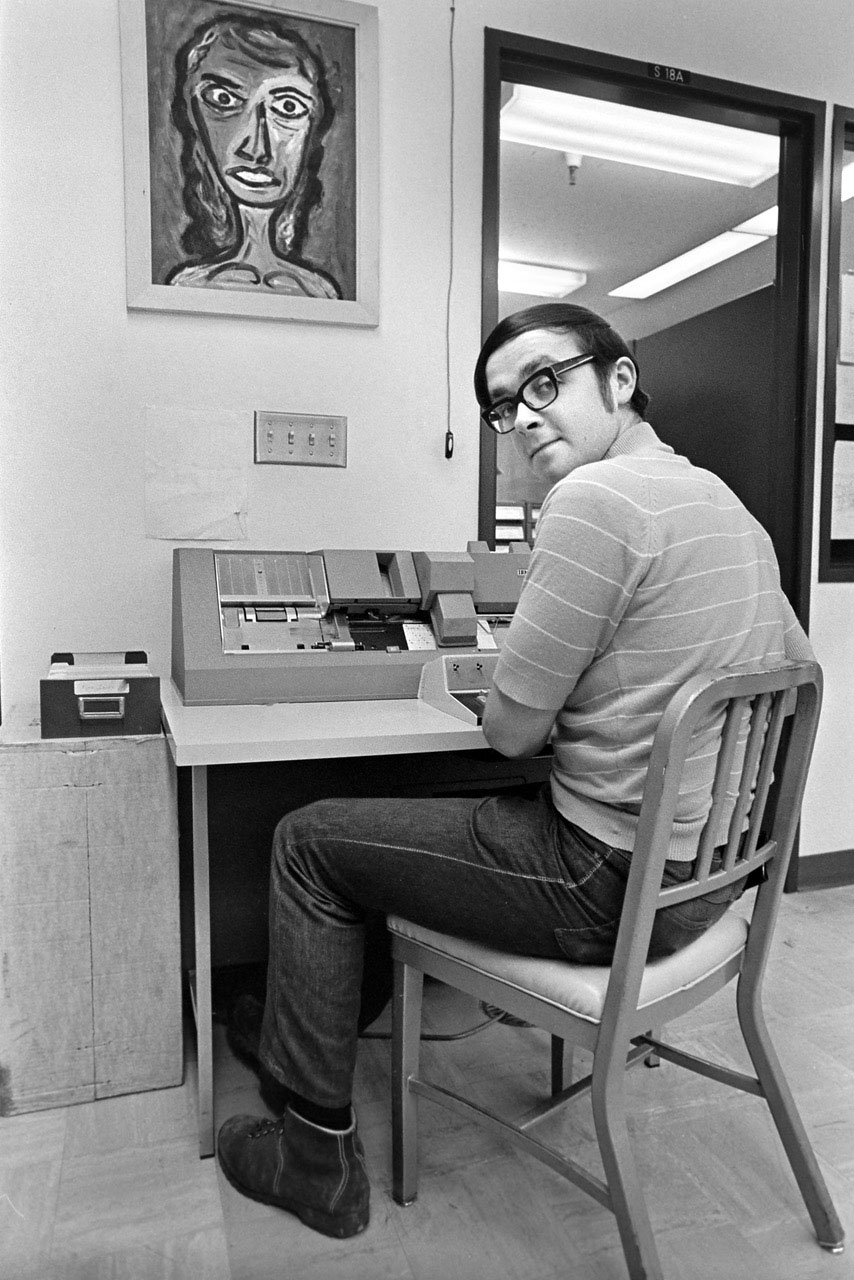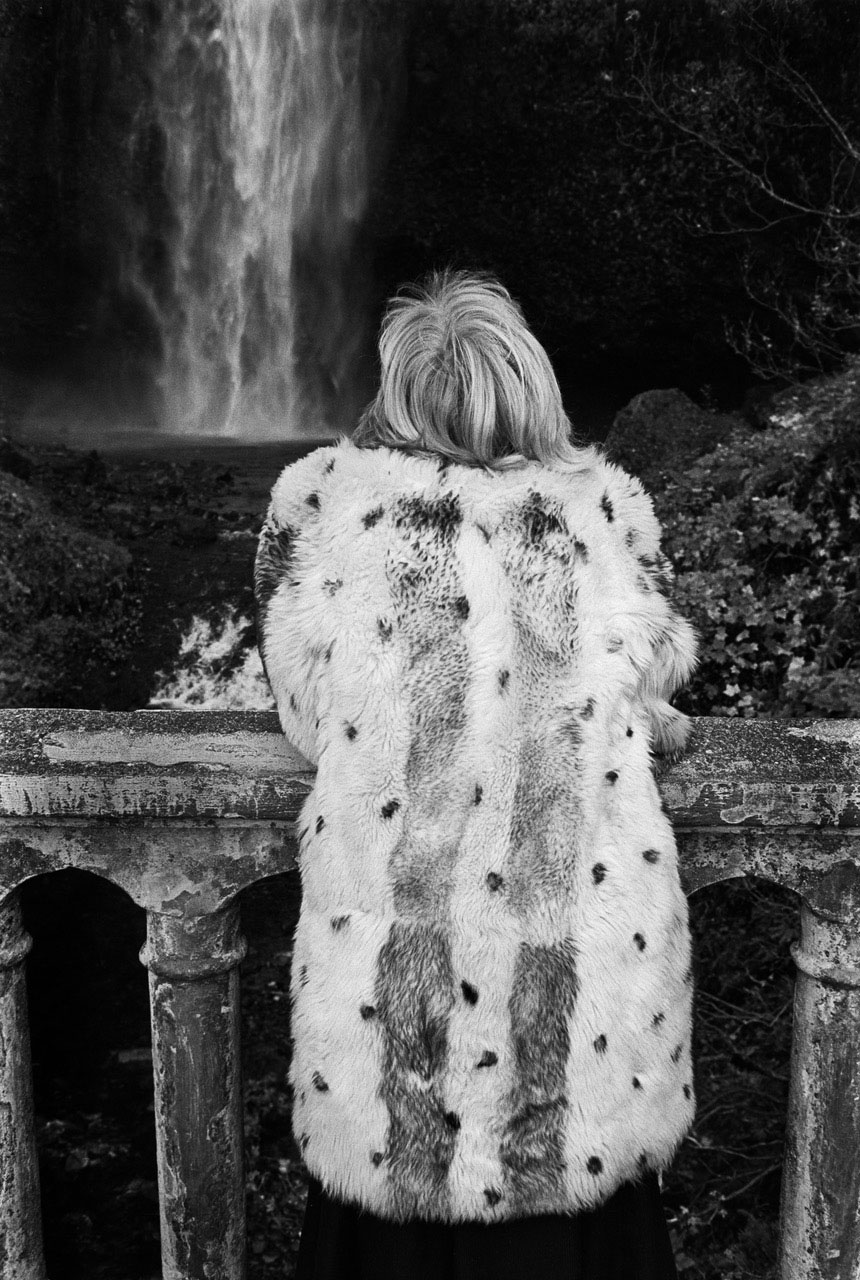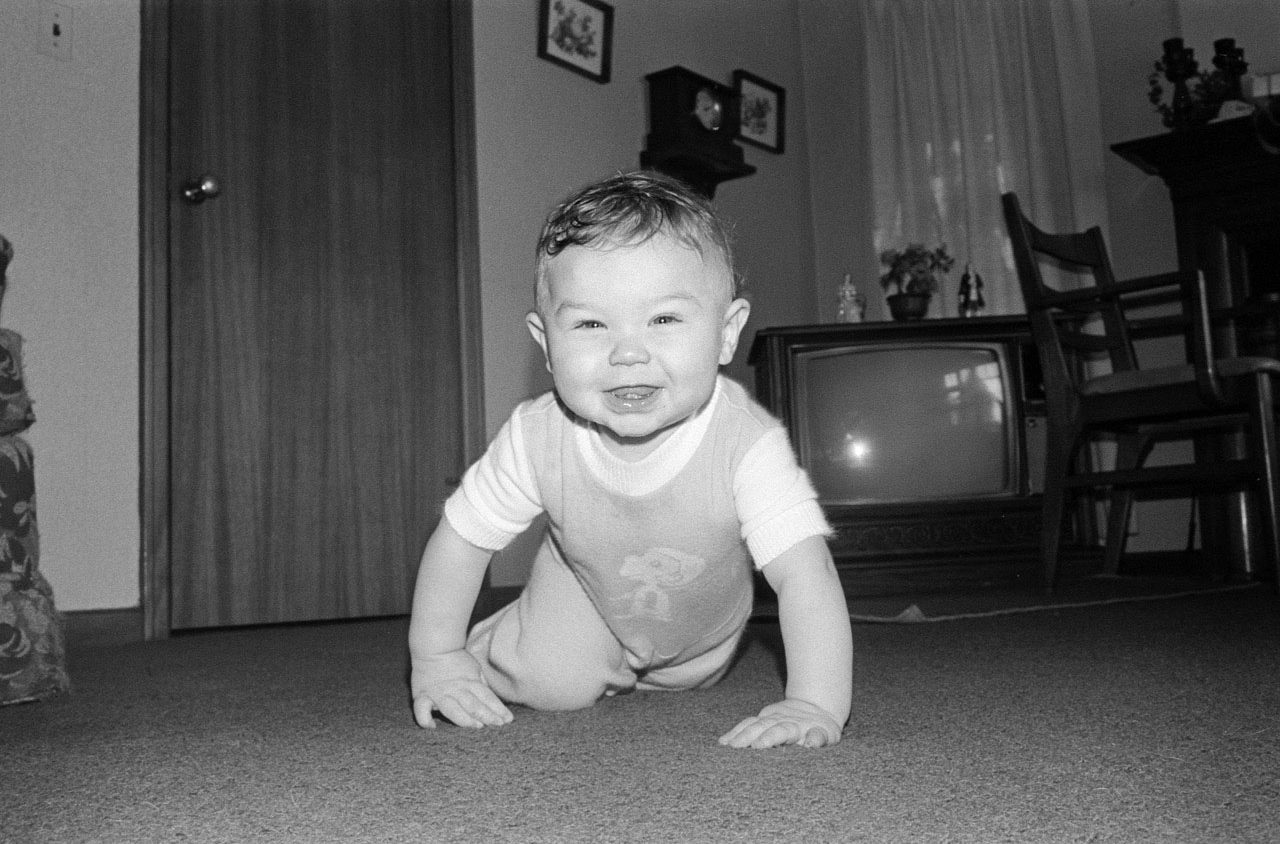Retired University of Oregon professor Craig Hickman has spent recent months posting black and white photos online that he took of friends decades ago, when he fancied a career as a photographer. Instead, he was seduced by computers — it was Hickman who created the popular children’s drawing program Kid Pix for the early Macintosh — and would go on to create a variety of conceptual art projects while teaching digital art at the UO. Blake Andrews conducted this interview by email.
Enlarge

Craig Hickman
What inspired you to begin posting old portraits to Facebook a few months ago?
When I was in grade school I felt the impulse to bring something for show and tell every day. It seems that I still have the same impulse. For years I have tended to post pictures in series, posting a new one on Facebook every day or two.
Like many photographers, I find that social media is the best way to get my work seen (which is what I really want as an artist). I know some people find Facebook isn’t the best platform for this, but it seems to work well for me.
Getting back to your question, one day it occurred to me that it would be fun to post old pictures of current FB friends. From the mid ’60s to the mid ’80s I took pictures constantly, and as a result I have an archive of tens of thousands of pictures. I’ve carried this archive of negatives with me over the years, but the volume of pictures made it difficult to view and edit with the slow speed of a standard scanner. Then a few years ago I started taking pictures of my negatives with a digital camera. I didn’t expect this to work very well, but at least I could look at every picture in positive on a large monitor. To my surprise, this produced better results than I was getting from my film scanner and was probably 100 times faster. Over the past few years, I have digitized all my negatives and have developed techniques to get the quality I want.
Since I started my FB friends project, I have visually searched the entire archive several times, looking for FB friends.
When you began the series, you posted a disclaimer that if anyone didn’t like their photo, you’d remove it. Did anyone take you up on that offer?
At this point no one has asked me to remove their picture. Also, almost everyone has posted a positive comment. In most cases I am not contacting the featured person ahead of time, so I always feel a little relief after they respond.
Enlarge

Craig Hickman
Have the photos allowed you to reconnect with old friends you’d lost touch with?
It’s been great! I have had welcome discussions with several people who meant a lot to me years ago but I haven’t connected with since.
Are you still able to connect with friends physically during the pandemic, perhaps outdoors with masks in small groups? Or have you been restricted only to virtual relationships?
I pretty much stay at home and communicate electronically. I think the Facebook Friends project was, in part, a response to the pandemic.
Take me back to the time you made all these pictures. What was your motivation for making them at the time? What was your general shooting process?
Over the period of time this project covers, I photographed constantly, as did many of my friends. It was just normal to have your camera with you. At the time my motivation wasn’t to document my life, it was to make interesting pictures.
You said in a post, “It was clear that, even though I didn’t think of myself as an artist, these were my people.” When did you first begin to think of yourself as an artist?
Like most people, as a child I enjoyed drawing and making things. Then I decided I wasn’t good at drawing, so I never thought about being an artist. When I was in second grade my family moved from Klamath Falls to Portland, near Reed College, which exposed me to ways of living and thinking that were new to me. That planted a seed that made it easier for me to develop more interest in art and the humanities.
Did you continue shooting people in your life after the 1980s, and are you still doing so now?
In the ’80s I got immersed in computers and computer programming. Long story short, I had more professional success in this area than in photography, so my focus changed. I was a professor at the University of Oregon for 30 years teaching digital arts and related subjects. In 1991 Broderbund Software published my computer program Kid Pix, which became very successful.
In the late ’90s my interest in photography returned, and since then I photograph on a regular basis, though not pictures of people so much. I’m doing composites grounded in local rural and urban landscapes.
Enlarge

Craig Hickman
How is your physical archive organized? How are you able to locate pictures of specific people amid the glut of other material?
I have very poor organization. Everything is in a large Lightroom [computer photo management] archive which at the moment says it contains 143,691 pictures. I spend a lot of time browsing. This is kludgy, but it allows me to have a global picture of what’s there, and it lets my brain spontaneously create new groupings.
Do you still look at old photo albums? Or have screen pictures supplanted the nostalgic role of those albums for you?
I am firmly planted in both the worlds of screen- and paper-based photos. The vast majority of my picture viewing is on screen, and I love the way pictures look on a good monitor. I also love the magic of turning a beautiful screen image into a tangible printed object. I have a large format printer, and make printed versions of most all of my projects. There is also something magic in the way a good photo book creates the visual experience of a concept and gives it to you to hold in your hand.
